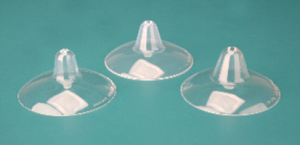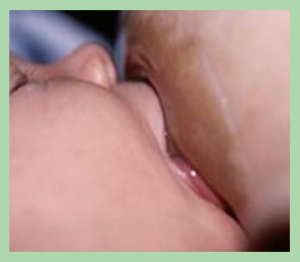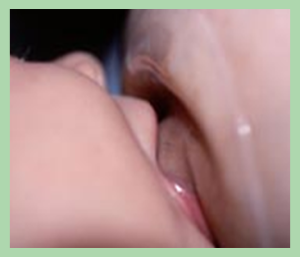 In most situations nipple shields are not necessary.
In most situations nipple shields are not necessary.
A good feeding assessment and assistance with positioning and latching by a breastfeeding expert is always recommended first.
- A nipple shield is a small, very thin, soft silicone cover that fits over the nipple and areola (the darkened part of the breast around the nipple), and is used during breastfeeding
- Nipple shields come in different sizes therefore should be fitted by an expert
- Seek help from a breastfeeding expert if you feel you need a nipple shield
A breastfeeding expert may suggest a nipple shield:
- once a moms milk supply is well established
- for a baby who refuses to latch onto the breast, even with positioning and latch support
- if a baby is used to drinking from a bottle and is having difficulty at the breast
- if a mom has flat or inverted nipples and all attempts to latch baby have failed
- if baby is born early and is having difficulty latching
- if baby has weak jaw muscles and has difficulty maintaining a latch
- if baby has limited tongue movement and is unable to latch onto the breast
- if moms nipples are sore or damaged and all attempts at changing positions and latching with help from a breastfeeding expert have failed
How do I use a nipple shield?
- Try to latch baby to breast without the shield at each feeding if possible
- Wet shield around the edges with clean water or nipple ointment, this helps it to stick to the breast
- Invert the shield so the bottom of the shield nipple can get close to the bottom of moms nipple
- Place shield over nipple so shield is centered over the nipple
- Allow the shield to relax over the nipple and areola
- Ensure the baby is latched far onto the shield, with lips curled back
- Ensure baby is not just sucking on the shield nipple
- Use breast compressions to encourage swallowing. When swallowing stops, switch sides, it is not necessary to wash the shield when switching sides
- After breastfeeding, make sure more milk is removed by hand expression or pumping to keep milk supply up. You can store milk in the fridge for up to 3 days and in back of fridge freezer or in deep freezer for 6 months.
- Wash nipple shield between feeds with hot, soapy water and let air dry. Do not use antibacterial soap
- Once dry, store in zip-lock bag or plastic container
- Watch for swallowing and keep track of wet and soiled diapers to ensure baby is drinking enough
- Go to all follow-up visits with health professional so baby can be weighed
- Wean from shield as soon as possible
- Follow-up closely with a breastfeeding expert

 Good latch on shield
Good latch on shield
 Shield centered on nipple
Shield centered on nipple